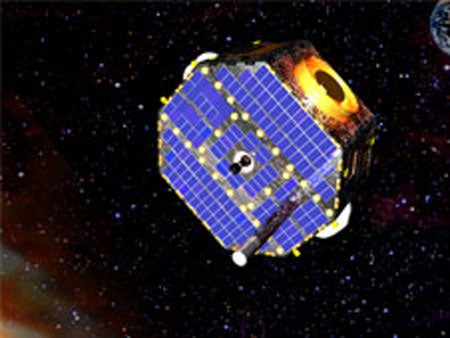Just more than 3 weeks since its October 19 launch, NASA’s Interstellar Boundary Explorer (IBEX) spacecraft — the first mission designed to image the environment at the edge of the solar system — concluded its orbit-raising phase and is preparing to start science observations.
After its launch to low-Earth orbit (about 140 miles/225 kilometers) onboard a Pegasus rocket, the spacecraft used its solid rocket motor and hydrazine propulsion system to perform a series of burns that ultimately raised its apogee (farthest point from Earth) to about 200,000 miles (322,000 km) and its perigee (closest point) to about 8,000 miles (13,000 km) above Earth — an orbit ideal for its science mission.
“Because the orbit goes so far out — about five-sixths of the way to the Moon — it gets pushed around significantly by lunar gravity and evolves over time in altitude and inclination,” said IBEX Principal Investigator Dr. David McComas, senior executive director of the Space Science and Engineering Division at Southwest Research Institute. “We’re now in an orbit that provides excellent science in viewing.”
Before the science investigation begins, the IBEX team will commission the spacecraft subsystems that weren’t needed for the orbit-raising period as well as the two IBEX science instruments. During commissioning, the spacecraft spin rate will be reduced from 23 revolutions per minute to 4 rpm and pointed toward the Sun. At that point, the remaining subsystems and instruments will be turned on and tuned to ensure optimum mission performance.
When it begins its science observations in early December, IBEX will use energetic neutral-atom imaging to create the first-ever all-sky maps of the interaction between the million miles per hour wind blown out by the Sun and the low-density material between the stars, known as the interstellar medium. The spacecraft will complete an all-sky map of the interstellar boundaries every 6 months.










